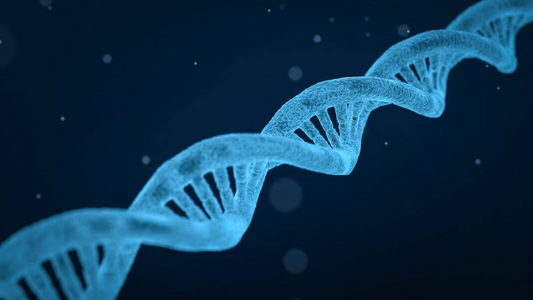
What is Pterostilbene? Why is it better than Resveratrol?
Pterostilbene, also known as trans-3,5-dimethoxy-4-hydroxystilbene, is a naturally occurring polyphenol present in plants. Belonging to the stilbene group of compounds, it serves as a key antioxidant in blueberries and plays a role in plants' defensive antimicrobial and antioxidative functions.
Discovered in 1977 by Langcake and Pryce, pterostilbene has garnered attention for its antioxidant properties and potential health benefits. Chemically related to resveratrol, another popular dietary supplement, much research suggests that pterostilbene offers superior health benefits compared to resveratrol, leading to its reputation as a "better resveratrol." While resveratrol has been extensively studied, pterostilbene has emerged as a promising alternative due to its superior bioavailability and metabolic stability.
This essay will explore the current understanding of pterostilbene's biological activities, potential therapeutic applications, and the available evidence from human studies.
1. Biological Activities and Mechanisms of Action:
Pterostilbene is a potent antioxidant and has been shown to exhibit various biological activities that contribute to its potential therapeutic effects. One of the primary mechanisms of action is its ability to modulate cellular signaling pathways involved in inflammation, oxidative stress, and apoptosis (programmed cell death).
Pterostilbene has been found to activate the nuclear factor erythroid 2-related factor 2 (Nrf2) pathway, which plays a crucial role in the cellular antioxidant response . By inducing the expression of antioxidant enzymes, such as superoxide dismutase and glutathione peroxidase, pterostilbene can enhance the body's defense against oxidative stress, a key contributor to various chronic diseases.
Additionally, pterostilbene has been shown to inhibit the activity of pro-inflammatory enzymes, such as cyclooxygenase (COX) and lipoxygenase (LOX), thereby reducing the production of inflammatory mediators like prostaglandins and leukotrienes . This anti-inflammatory property of pterostilbene has implications for the management of conditions like arthritis, cardiovascular diseases, and certain types of cancer, where chronic inflammation plays a significant role.
Pterostilbene has also demonstrated potential in modulating cellular energy metabolism and mitochondrial function. Studies have shown that pterostilbene can activate the AMP-activated protein kinase (AMPK) pathway, which is a key regulator of cellular energy homeostasis . By activating AMPK, pterostilbene may improve glucose and lipid metabolism, making it a potential therapeutic agent for metabolic disorders like type 2 diabetes and obesity.
2. Potential Therapeutic Applications:
Based on its diverse biological activities, pterostilbene has been explored for its potential therapeutic applications in various health conditions:
1. Metabolic Disorders:
Preclinical studies have demonstrated that pterostilbene can improve insulin sensitivity, reduce blood glucose levels, and promote weight loss in animal models of obesity and type 2 diabetes . These effects are attributed to pterostilbene's ability to modulate cellular energy metabolism and reduce inflammation, both of which are implicated in the development of metabolic disorders.
2. Cardiovascular Health:
Pterostilbene has shown promise in improving cardiovascular health through its antioxidant, anti-inflammatory, and lipid-lowering properties. In animal studies, pterostilbene has been found to reduce atherosclerotic plaque formation, improve endothelial function, and lower blood pressure . These effects may contribute to a reduced risk of cardiovascular diseases, such as heart attacks and strokes.
3. Neurological Disorders:
Emerging evidence suggests that pterostilbene may have neuroprotective effects and potential applications in the management of neurological disorders like Alzheimer's disease and Parkinson's disease. Pterostilbene has been shown to inhibit the formation of amyloid-beta plaques, a hallmark of Alzheimer's disease, and protect against oxidative stress-induced neuronal damage .
4. Cancer:
Pterostilbene has demonstrated anti-cancer properties in various in vitro and in vivo studies. It has been found to inhibit the growth and proliferation of cancer cells, induce apoptosis, and suppress angiogenesis (the formation of new blood vessels that support tumor growth) . These effects have been observed in various types of cancer, including breast, colon, and prostate cancer.
3. Human Studies and Clinical Trials:
While the majority of research on pterostilbene has been conducted in preclinical models, a growing number of human studies have explored its potential benefits and safety profile.
In a randomized, double-blind, placebo-controlled study, healthy individuals who received pterostilbene supplementation (125 mg or 250 mg) for six to eight weeks experienced a significant reduction in oxidative stress markers, such as malondialdehyde and oxidized low-density lipoprotein (LDL) cholesterol . This study provided evidence for pterostilbene's antioxidant effects in humans.
Another study investigated the effects of pterostilbene supplementation on metabolic parameters in individuals with obesity and prediabetes. The results showed that pterostilbene (100 mg twice daily for eight weeks) improved insulin sensitivity, reduced blood glucose levels, and decreased markers of inflammation compared to the placebo group .
In a pilot study involving patients with Alzheimer's disease, pterostilbene supplementation (100 mg twice daily for 12 months) was found to be well-tolerated and showed potential cognitive benefits, as assessed by various neuropsychological tests .
4. Source of Pterostilbene:
Pterostilbene is primarily found in blueberries, with the content per blueberry varying depending on the type, ranging from 99 ng to 520 ng. Other sources of pterostilbene include almonds, grape leaves and vines, cranberries, and related Vaccinium berries such as lingonberries, bilberries, and huckleberries.
Although blueberries contain pterostilbene, consuming enough to match the levels found in dietary supplements would require an impractical amount of fruit. Therefore, pterostilbene is often obtained through supplements, which typically range from 50 mg to 1,000 mg per capsule.
5. Safety and Bioavailability:
One of the advantages of pterostilbene over resveratrol is its superior bioavailability and metabolic stability. Pterostilbene has been shown to have a higher absorption rate and longer elimination half-life compared to resveratrol, which may contribute to its enhanced biological effects .
Regarding safety, pterostilbene has been generally well-tolerated in human studies, with no significant adverse effects reported at doses up to 250 mg per day. 250 mg is the exact amount provided in each capsule of our REV-TIME supplement.
6. Conclusion:
Pterostilbene, a naturally occurring stilbene compound, has emerged as a promising therapeutic agent with diverse biological activities, including antioxidant, anti-inflammatory, and metabolic-modulating properties. Preclinical studies have demonstrated its potential in various health conditions, such as metabolic disorders, cardiovascular diseases, neurological disorders, and cancer.
While human studies are still limited, the available evidence suggests that pterostilbene supplementation may have beneficial effects on oxidative stress, metabolic parameters, and cognitive function. Improvements in these factors may lead to a longer and healthier lifespan.
Pterostilbene's superior bioavailability and metabolic stability compared to resveratrol make it an attractive candidate for further research and potential therapeutic applications. As our understanding of pterostilbene's mechanisms of action and pharmacokinetics continues to evolve, it may pave the way for novel interventions and treatment strategies in various health conditions. That’s why we have opted for Pterostilbene instead of resverarol, compared to the similar products or other companies.Our priority remains ensuring the highest quality and efficacy of our products.
BalanceGenics 12 Rev-Time:
BalanceGenics 12 Rev-Time is a high-quality supplement designed to reverse the 12 hallmarks of aging. Our scientifically-backed formula aims to help you achieve your health goals while slowing your aging process.
Key Ingredients and Benefits:
- Calcium Alpha-Ketoglutarate (1000mg /daily): Provides a key metabolite required for cellular energy production, enhancing exercise performance.
-
Quercetin (500mg /daily):
Supports the immune system and helps clear out senescent "zombie" cells.
-
Pterostilbene (250mg /daily):
Activates sirtuin proteins that regulate cellular and metabolic processes, maintaining the epigenome.
-
Fisetin (100mg /daily):
A senolytic compound that removes senescent cells and supports immunity.
-
Spermidine (900mcg /daily):
A potent inducer of autophagy, enhancing mitochondrial function.
For more information, please see BalanceGenics Product page:
BalanceGenics 12 Rev-Time (Reverse 12 Hallmarks of Aging)
Reference List:
Chang, Jaewon, et al. “Low-Dose Pterostilbene, but Not Resveratrol, Is a Potent Neuromodulator in Aging and Alzheimer’s Disease.” Neurobiology of Aging, vol. 33, no. 9, 1 Sept. 2012, pp. 2062–2071, pubmed.ncbi.nlm.nih.gov/21982274/, https://doi.org/10.1016/j.neurobiolaging.2011.08.015.
Cheng, Jin-Chun, et al. “Structure–Activity Relationship Studies of Resveratrol and Its Analogues by the Reaction Kinetics of Low Density Lipoprotein Peroxidation.” Bioorganic Chemistry, vol. 34, no. 3, June 2006, pp. 142–157, https://doi.org/10.1016/j.bioorg.2006.04.001. Accessed 2 June 2021.
Hougee, Sander, et al. “Selective COX-2 Inhibition by a Pterocarpus Marsupium Extract Characterized by Pterostilbene, and Its Activity in Healthy Human Volunteers.” Planta Medica, vol. 71, no. 5, 1 May 2005, pp. 387–392, pubmed.ncbi.nlm.nih.gov/15931573/, https://doi.org/10.1055/s-2005-864130. Accessed 10 May 2024.
Lin, Victor Chia-Hsiang, et al. “Activation of AMPK by Pterostilbene Suppresses Lipogenesis and Cell-Cycle Progression in P53 Positive and Negative Human Prostate Cancer Cells.” Journal of Agricultural and Food Chemistry, vol. 60, no. 25, 19 June 2012, pp. 6399–6407, https://doi.org/10.1021/jf301499e. Accessed 6 Dec. 2020.
McCormack, Denise, and David McFadden. “A Review of Pterostilbene Antioxidant Activity and Disease Modification.” Oxidative Medicine and Cellular Longevity, vol. 2013, 2013, pp. 1–15, https://doi.org/10.1155/2013/575482.
Pari, L., and M. Amarnath Satheesh. “Effect of Pterostilbene on Hepatic Key Enzymes of Glucose Metabolism in Streptozotocin- and Nicotinamide-Induced Diabetic Rats.” Life Sciences, vol. 79, no. 7, July 2006, pp. 641–645, https://doi.org/10.1016/j.lfs.2006.02.036. Accessed 26 June 2020.
Riche, Daniel M., et al. “Analysis of Safety from a Human Clinical Trial with Pterostilbene.” Journal of Toxicology, vol. 2013, 2013, p. 463595, pubmed.ncbi.nlm.nih.gov/23431291/, https://doi.org/10.1155/2013/463595. Accessed 9 Dec. 2020.
Riche, Daniel M., et al. “Pterostilbene on Metabolic Parameters: A Randomized, Double-Blind, and Placebo-Controlled Trial.” Evidence-Based Complementary and Alternative Medicine, vol. 2014, 2014, pp. 1–8, www.hindawi.com/journals/ecam/2014/459165/, https://doi.org/10.1155/2014/459165. Accessed 8 Dec. 2019.





